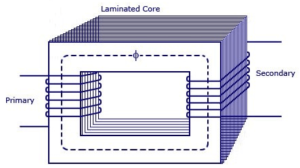Video: Electrical transformer working principle
Electrical transformer working principle: We know that a Electrical transformer is a static device that transfer electrical energy between two or more circuit through electromagnetic induction.
So we can say that The transformer is an electrical device that consisting of two or more coils of wire used to transfer electrical energy by means of a changing field. It transforms electric power in one circuit to another circuit without changing the frequency.
A transformer is a static device that is utilized to either raise or lower voltages and current in an electrical circuit. In modern electrical circulation frameworks, transformers are utilized to help voltage levels in order to diminish line misfortunes amid transmission.
The main principle of operation of a transformer is mutual inductance between two circuit which is linked by a common magnetic flux. A transformer comprises of two coils that are electrically particular and inductive, however are ,magnetically connected through a way of reluctance. The electrical transformer working principle guideline can be comprehended from the figure beneath.

A transformer works on the principle of mutual induction of two coils which is called Faraday Law’s of electromagnetic induction. When the current in the primary coil side changed, the flux linked to the secondary coil also changed hence emf induced in the secondary coil due to Faraday Law’s of electromagnetic induction. A transformer is based on two principle
- Electric current can produce a magnetic field
- Changing of the magnetic field within a coil of wire induces a voltage across the end of the coil.
So we can say, transformer does:
- Transfer of electric power from one circuit to another.
- Transfer of electric power without any change in frequency.
- Transfer with the principle of electromagnetic induction.
- The two electrical circuits are linked by mutual induction.
In above video, you will get clear understand about the Electrical transformer working principle.


